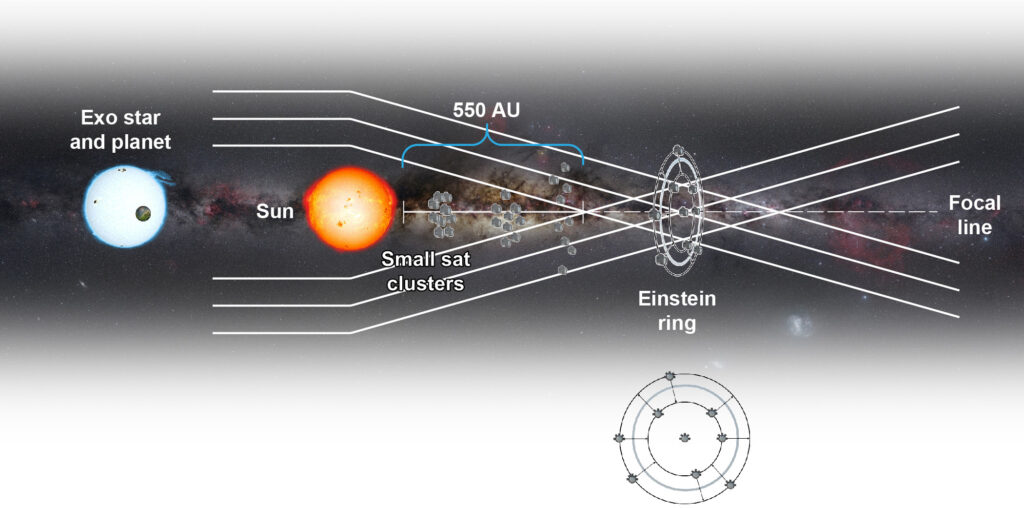Scientists propose to use the effect of bending the rays of stars by the gravitational field of the Sun to get an image of an exoplanet. Thus, it is possible to get 1000 times better magnification than the most advanced modern technologies allow.

The gravitational lens of the Sun as an element of
a space telescope
Scientists from Stanford University suggest using the effect of gravitational lensing to obtain images of exoplanets located far from Earth. Our Sun will act as a body that will distort space.
The article published in The Astrophysical Journal is based on a 2020 study. Then an algorithm was proposed that could reconstruct the image of the planet from the light around the Sun. When this happens, all the radiation from the star forms a ring.
No matter how weak and distorted it may be, scientists believe that it can be assembled with a telescope and see not only the disk of the planet, but also the seas and oceans on it. It is believed it is possible to get a picture of the planet at a distance of 100 light-years, which would be as clear as a photograph of the Earth taken from the Moon.
How to build a gravitational lens telescope
Scientists claim that they can get images 1,000 times better than any of the man-made optical systems. If they just tried to create such a space telescope, then its mirror should be 20 times larger than the Earth.

However, scientists are sure that a device the size of an old Hubble is enough for this. It is only necessary to place it at the point of the solar focus. It is here all the rays that have passed through its gravitational lens come together.
The only problem is that the gravitational focus of the Sun is 14 times farther away than Pluto. And this is more than the maximum distance that a human-made device has ever overcome. Scientists are sure that the creation of such a telescope is a matter of the next hundred years. And then it will take 20-40 years to get to its destination.
According to phys.org
Follow us on Twitter to get the most interesting space news in time
https://twitter.com/ust_magazine

